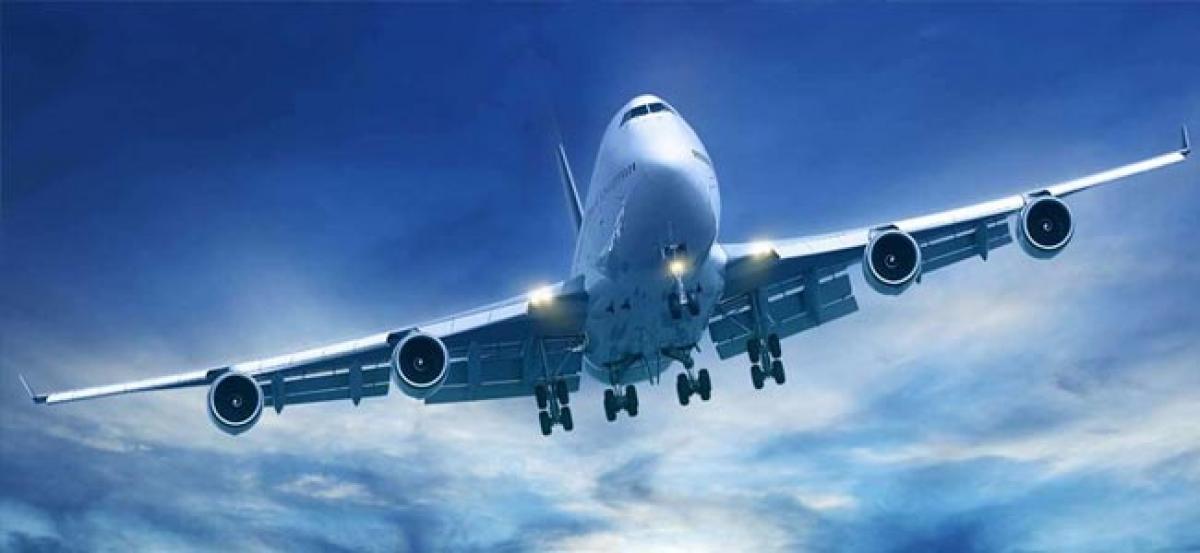Live
- BSNL's Rs 333 Plan Challenges Airtel and Jio with 1300GB Data: Details
- PM Modi's appeal to buy Khadi garments leads to huge demand in Bihar's Samastipur
- Mohammad Amir announces retirement from international cricket
- Chandrababu supports One Nation, One Election System, says elections in 2029
- Cong not pursuing politics of vengeance: D. K. Shivakumar on Covid 'scam' FIR
- Mexican consulates to strengthen support for nationals in face of US deportation
- Minister Meghwal to table ‘One Nation, One Election’ Bill in Lok Sabha on Monday
- 3rd Test: Day one’s play at the Gabba called off due to persistent rain
- National Energy Conservation Day: Switch to Energy-Efficient Devices
- Rekha gets emotional as she shares a heartfelt moment with Big B's grandson Agastya Nanda
Just In

In a bid to save fuel, cut emission and have better route utilisation, Indian carriers have suggested a new plan to the government that co-opts the air space controlled by the armed forces. It also calls for bypassing Pakistan while flying overseas to save navigation fees.
New Delhi: In a bid to save fuel, cut emission and have better route utilisation, Indian carriers have suggested a new plan to the government that co-opts the air space controlled by the armed forces. It also calls for bypassing Pakistan while flying overseas to save navigation fees.
Called the Flexible Use of Airspace Initiative, under the larger aviation services management, it calls for: New, permanent routes for shorter navigation; grant of weekly permissions to operate shorter routes; and case-by-case approval by the defence Air Traffic Control to a pilot in air.
"If this is institutionalised, it will be a win-win-win for all: Less fuel use and lower emission -- which is good for the environment -- significant cut in fuel bills and shorter flying time for passengers," a top airline official said. "Avoiding Pakistani air space is part of the strategy."
The National Civil Aviation Policy that was unveiled in June also promises that the Ministry of Civil Aviation will strive to optimise the flexible use of airspace initiative in consultation with the Ministry of Defence.
Sources said the Airports Authority of India has constituted a separate Directorate under the Department of Air Navigation Service Providers to look into the optimisation of the entire Indian airspace in coordination with the Aviation Ministry.
"Approximately 60 per cent of Indian airspace is under civilian operations. The rest is restricted and with the defence to operate. Due to this, most of the navigational routes for civil aircraft are not straight," said one official of an airline that has also sought the flexi plan.
"Take for example the Ahmedabad-Hyderabad sector. Currently, the route approved calls for around 590 nautical miles, since we have to fly over designated airport spaces. But under the flexi plan that we have proposed, it will get shorter to 480 nautical miles," the official said.
"Similarly, the Delhi-Goa sector requires us to fly over Mumbai, then along the coastline of the Arabian Sea to reach the destination. But what we have suggested is: We should be able to fly as the crow flies -- in a straight route -- over Madhya Pradesh, Maharashtra and Karnataka."
Explaining the same process on international routes, another airline official said flying from Ahmedabad to Dubai calls for Route Navigation Facility Charges of Rs 62,700 per leg, fuel of 7,800 kg and maximum pay load of 17,400 kg, or 166 kg per passenger.
But under the flexi plan, the navigation charges will get reduced to Rs 34,000 (as the Pakistan leg will be skipped), the fuel requirement will be 6,900 kg, while the pay load can be increased to 18,300 kg, or 174 kg per person. This translates into savings of Rs 100,000 per leg.
"Our air force and navy have to approve this. But this is quite common in the US and Europe."
As regards the third component -- called tactical air space management -- industry officials said this will neither be a permanent feature, nor can airlines use it in their route planning. Yet, on a case-by-case basis, it can yield some good savings.
Explaining the feature, an official said, the flight path between Delhi and Dehradun at present is slightly circuitous. "But if at a given point, the air space over Hindon -- which belongs to the Air Force -- is free, then for that particular flight the pilot can be given a fly-by nod."

© 2024 Hyderabad Media House Limited/The Hans India. All rights reserved. Powered by hocalwire.com







